Faces behind The Mikado
As the curtain rises and the show begins, many people will be fascinated with the lights, actors, and plot line. However, not all realize how much work is put into these productions. There are countless hours spent working behind the scenes of the Homestead Theatre Department’s plays, perfecting every aspect.
Starting Thursday, Feb. 5 at 7:30 p.m and continuing Friday and Saturday at 7:30 p.m. and Sunday at 2:00 p.m., the Homestead Drama Department will be performing The Mikado; a musical set in a land which prohibits the strangest thing and has a storyline containing love and comedy.
Below are some of the students who work just as hard as the actors to make the show what it is. Each person was asked to explain their position, how big of a commitment working behind the play is and their favorite part in the whole process. Check it out.
The Pit:

“Being in pit means you play challenging music on your instrument for hours a week. At first, it’s a daunting endeavor, but you learn as you go and everything comes together! We usually practice once or twice a week after school until tech, where we stay every day well into the night. Usually, the commitment for pit mostly entails individual practice to learn your part, since there isn’t time to work out small details in a large group setting. My favorite part of being in pit is working with passionate people to create a production that is far greater than the sum of its parts.” – Sarah McCarthy, senior
Click here to listen to “Three Little Maids From School,” just one of the songs the pit will be preforming for The Mikado.
Costume Design:
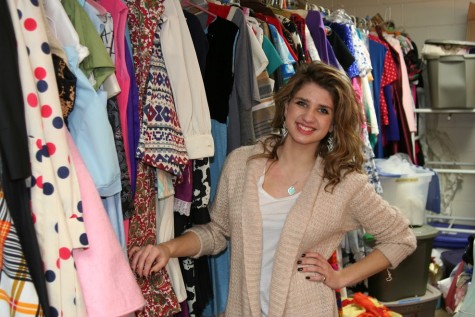
“Being a costume designer entails a lot of hours and hard work. The process of designing a show includes many stages and lots of drawing. Then a costume designer has costume technicians try and create the final designs (I do both). It is a big commitment and there is a lot of work going into costume design but it’s amazing. My favorite part about being a designer is seeing what I worked on presented on stage during the shows. I love this part because I get to see all the hard work, all of the time and effort, being put into action. I love seeing my work, and the work of all the customers, create something great paired with the work of the actors and crew.” – Emily Eckhardt, senior
Assistant Directors:
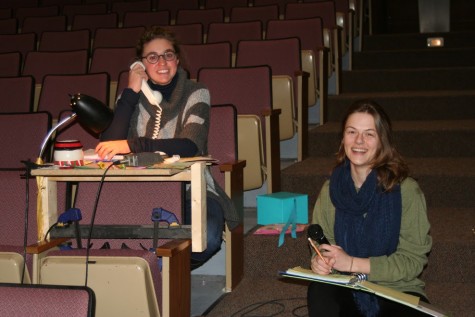
Sarah Mai, junior: “I communicate frequently with the cast (more than anything else), crew, props, costumes and the other directors. In the first few weeks of the rehearsal process, assistant directors are mostly involved in the blocking of scenes, paperwork, making excel spreadsheets, figuring out scheduling and meeting with and talking to the orchestrators of each creative group. Now, in the penultimate week of rehearsal, I will be mostly checking up with the actors, running scenes with them, hammering out problems, finalizing blocking, perfecting comedic timing and making sure their lines are said correctly. Assistant directors write ‘notes’ to the actors giving suggestions and feedback about their performances.”
Alex Gieske, senior: “We have also been working on making a powerpoint with all of the lyrics to all of the songs on it. The powerpoint will be projected on a screen above the stage so the audience can understand exactly what the actors are singing. It’s a lot of work, but in the end it will definitely be worth seeing the final product. Being involved in the productions at Homestead is always a huge time commitment. We strive to produce spectacular shows, but time needs to put into the show before it can be amazing. My favorite part of the job is knowing that when we started we essentially only had a script with some words and music on it. Now, months later, we have a show with three-dimensional characters and humor and a set that is absolutely gorgeous.”
Both Mai and Geiske will be sharing the position once held by Lonnae Hickman in light of her absence. With one week before show time, there is a lot of work to be done.
Makeup Artist:
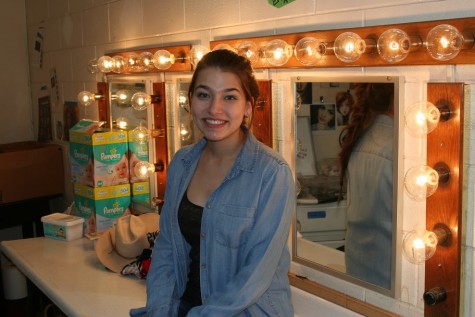
“Being in makeup entails a lot of flexibility and creativity. Flexibility because makeup crew really only is in session for tech week (dress rehearsal) and then the shows. We share a room with a changing room, so it gets really cramped… It’s not a lot of work in the amount of days put in. We’re in session for roughly seven days, as opposed to the months the actors and costumes crew have worked…I make sure all of the actors get their makeup done and I ‘okay’ their makeup by putting on setting powder to prevent them from sweating it all off. My favorite thing about being the head of makeup/on makeup is opening night. About half an hour after people start trickling in, there’s suddenly a huge explosion of people getting into costume, hair, and makeup. I’m now learning how to be a capable, dependable leader with my position this year. It’s [makeup] that actually helped me discover what I want to major in: Management and Leadership.” – Alessandra Gouverneur, senior
Stage Crew:

“Stage crew entails a lot of construction, painting, and getting showered with dust. For my particular area of stage crew, I typically work with paint. Depending on where you excel, you are assigned different jobs. Those who are able to use power tools and plan out the dimensions of different pieces usually end up in construction. Those who are more artistically influenced, fall into the paint crew…For shows we must thoroughly sweep and mop the stage each day, to ensure there are no stray screws or anything that may harm the cast. We run the soundboard, put wireless microphones on the actors, move set pieces on and off stage in a manner of seconds and make sure that certain props are on stage when necessary. Being in stage crew is definitely a lot of work. The last two weeks before the show, we stay at school till 9 p.m. at the latest…My favorite things about stage crew is being able to design and build pieces to be used in the show. You get a certain sense of pride when the lights go up on opening night, and you get to see the staircase you built, or the detail on the particular part of the set you painted.” – Erin Meskimen, junior
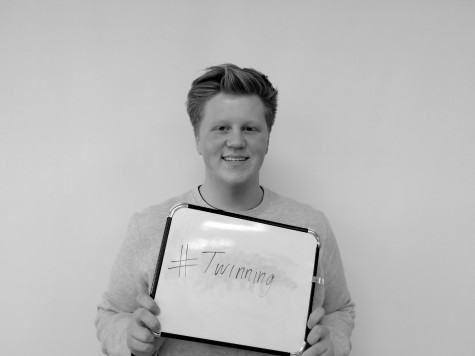
Hi my name is Michael Sande, and I'm one of publications News Mag designers. Ever since I took the Intro to Publications class I knew this was a course...


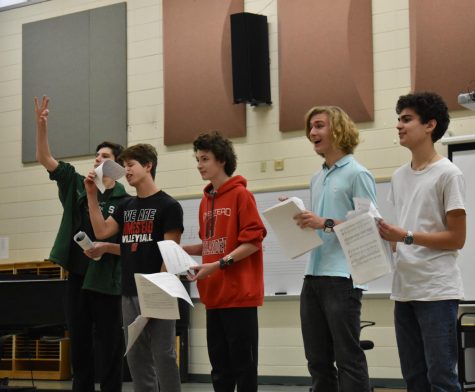
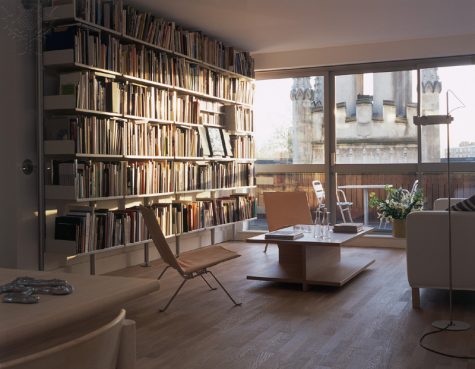

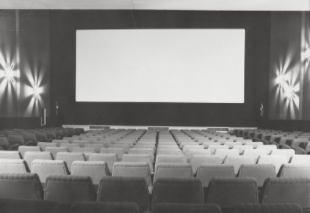
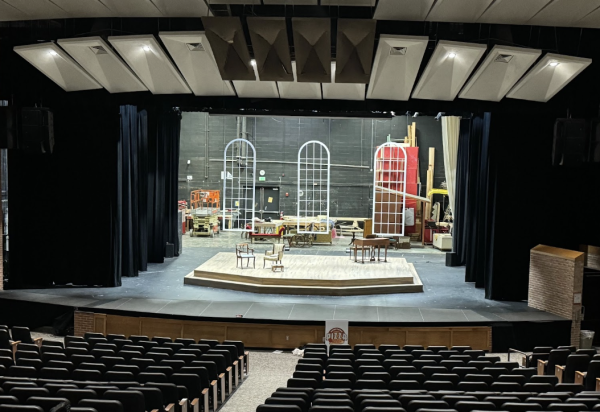
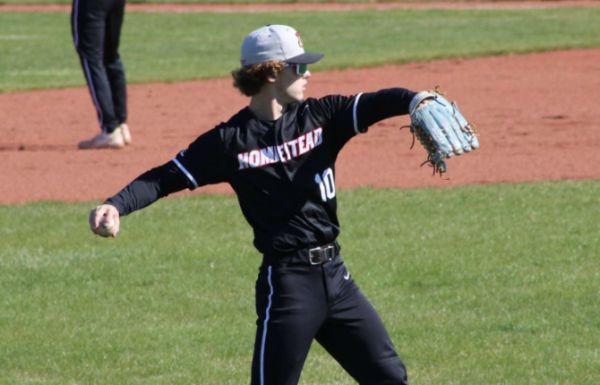




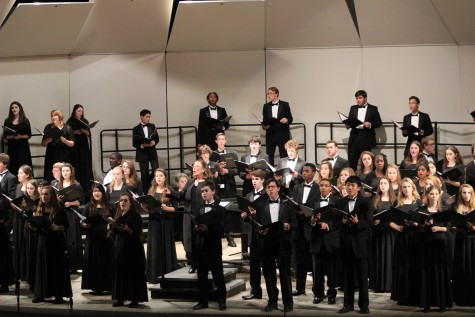
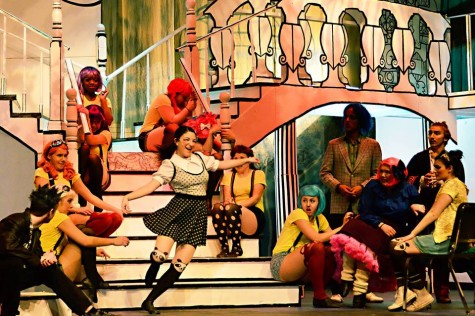
Emma Zander • Feb 2, 2015 at 8:02 pm
Great article!!